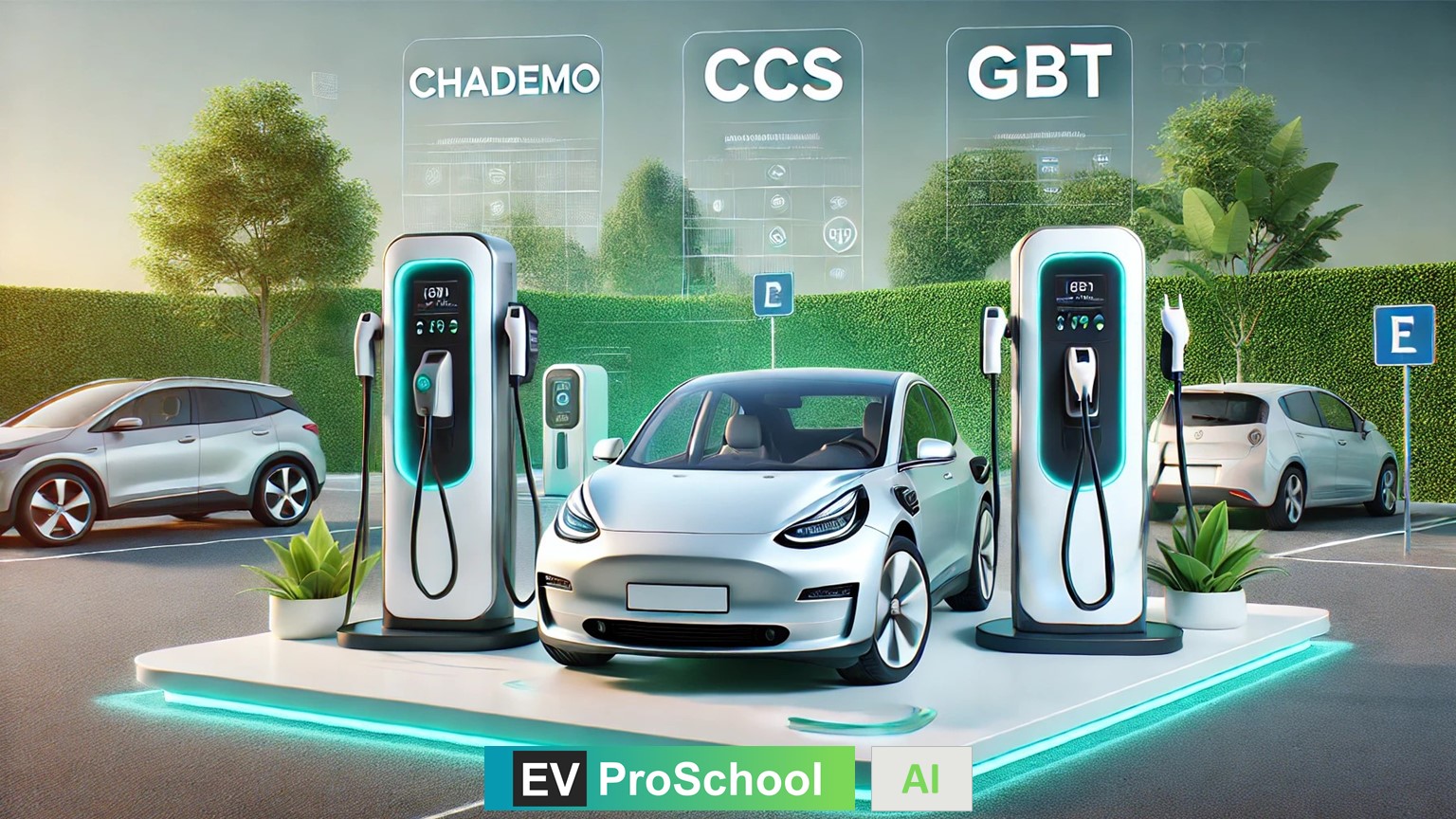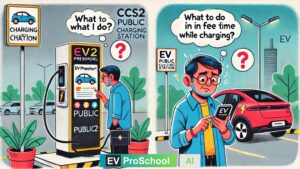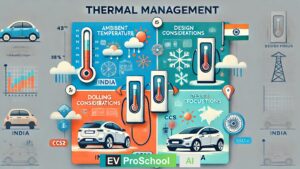CHAdeMO
Definition
A fast-charging standard developed in Japan for DC charging, enabling bidirectional charging for vehicle-to-grid (V2G) applications.
Widely adopted in Japanese EVs and some global markets.

Compatibility
- Primarily used by Nissan, Mitsubishi, and some Toyota models.
- Limited support in Europe and North America as CCS gains traction.
Charging Speed
- Maximum Power: 62.5 kW (DC)
- Voltage Range: 50V to 500V DC
- Current: Up to 125A
Advantages
- V2G capability allows vehicles to act as energy storage for homes or grids.
- Proven reliability in early EV markets like Japan.
Disadvantages
- Slower charging speeds compared to CCS.
- Limited adoption outside Japan.
CCS (Combined Charging System)
Definition
A universal fast-charging standard combining AC and DC charging in one connector, widely adopted in Europe and North America.
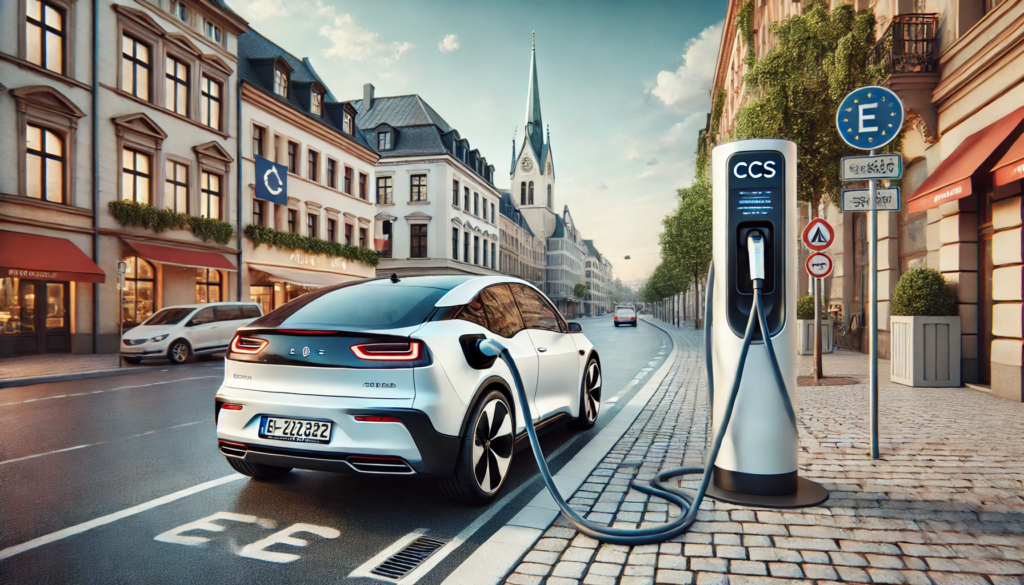
Compatibility
- Supported by most European and American EVs, including Tesla (with adapter), Volkswagen, BMW, and Hyundai.
Charging Speed
- Maximum Power: Up to 350 kW (DC Fast Charging)
- Voltage Range: 200V to 1000V DC
- Current: Up to 500A
Advantages
- Faster charging speeds for long-distance travel.
- Growing global infrastructure and interoperability.
- Single connector for both AC and DC charging.
Disadvantages
- Higher installation costs for charging infrastructure.
- Limited bidirectional (V2G) capabilities compared to CHAdeMO.
GBT (Guobiao Standard)
Definition
China’s national EV charging standard for AC and DC charging, primarily used within China. The standard continues to evolve to meet the needs of the world’s largest EV market.
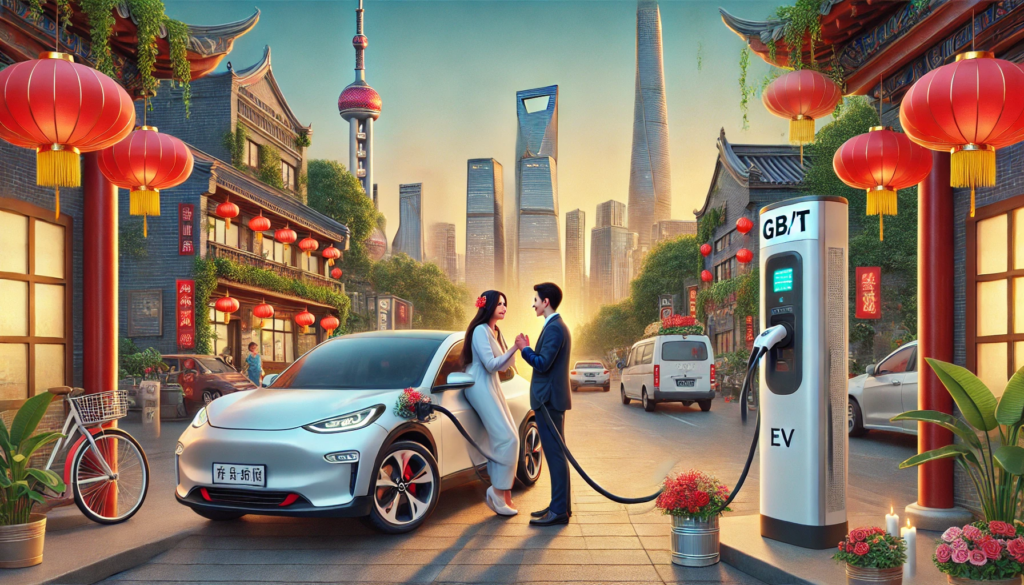
Compatibility
- Widely supported by Chinese automakers such as BYD, NIO, and XPeng.
Charging Speed
- Maximum Power: Up to 250 kW (DC Fast Charging, recent upgrades)
- Voltage Range: 200V to 750V DC
- Current: Up to 250A
Advantages
- Dominates the world’s largest EV market.
- Supported by government policies for widespread adoption.
Disadvantages
- Lack of compatibility outside China.
- Slower global adoption compared to CCS and CHAdeMO.
Summary Table
| Feature | CHAdeMO | CCS | GBT |
|---|---|---|---|
| Region | Japan, limited global | Europe, North America | China |
| Max Power (DC) | 62.5 kW | Up to 350 kW | Up to 250 kW |
| Bidirectional (V2G) | Yes | Limited | Limited |
| Adoption | Declining | Rapidly increasing | Predominantly in China |
| Main Automakers | Nissan, Mitsubishi | BMW, VW, Hyundai | BYD, NIO, XPeng |
CCS2 Charger in India
India has embraced the CCS2 (Combined Charging System Type 2) standard as the preferred charging protocol for electric vehicles (EVs). This standard is not only in line with global trends but also aligns with the Indian government’s push to adopt universal standards that support faster and more efficient EV charging infrastructure. Here’s an in-depth look into CCS2’s role in India, presented in a similar style to the above:

Definition
CCS2 is an upgraded version of the Combined Charging System widely used for both AC and DC fast charging. It offers a single connector design compatible with both slow and fast charging modes. In India, it is the mandated standard for most EV manufacturers to ensure interoperability and user convenience.
Compatibility in India
- Supported by popular Indian and global automakers such as Tata Motors, Mahindra, MG Motors, BYD, Kia, and Hyundai.
- Infrastructure providers like Tata Power, Ather Energy, Fortum, and BPCL are rapidly deploying CCS2 chargers.
Charging Speed in India
- AC Charging: 22 kW (Level 2)
- DC Fast Charging: Up to 350 kW (depending on charger type and EV compatibility)
- Typical Public Chargers in India: Range from 50 kW to 150 kW for DC charging.
Advantages for India
- Universality: CCS2’s compatibility with both AC and DC charging supports diverse use cases, from slow overnight charging at home to rapid public charging on highways.
- Future-Ready: Its high power capacity supports next-generation EVs capable of ultra-fast charging.
- Scalability: India’s infrastructure developers can integrate CCS2 with existing grids and upgrade them as demand grows.
Current Deployment
- Highways: The Indian government is focused on deploying CCS2 chargers on major highways to create an “Electric Highway” network, enhancing long-distance EV travel.
- Urban Areas: CCS2 chargers are being installed in cities for quick top-ups, particularly in malls, office complexes, and petrol pumps.
- Battery Electric Buses (BEBs): Many fleet operators, including those in public transportation, have adopted CCS2 for charging electric buses.
